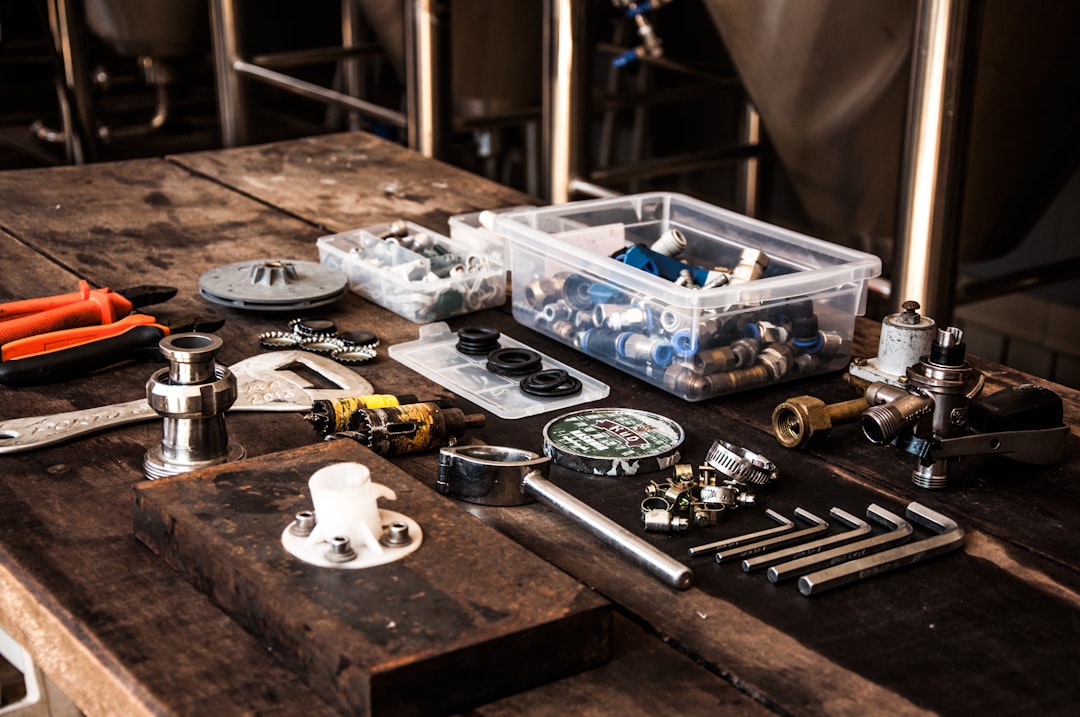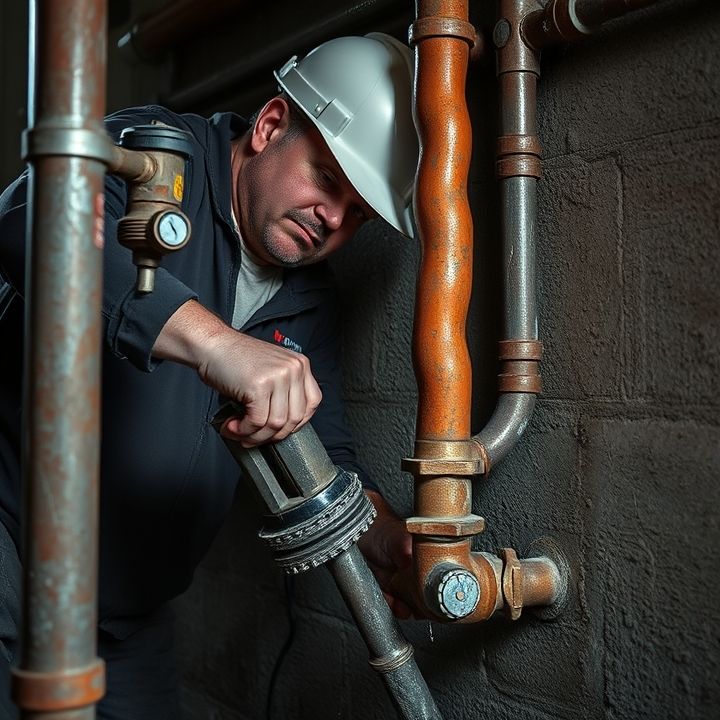Table of Contents
- Introduction
- Understanding backflow and its causes
- Identifying symptoms of backflow issues
- Plumbing inspection techniques for backflow detection
- Methods for plumbing backflow prevention
- Plumbing repairs for existing backflow problems
- The role of plumbing valve repair in backflow management
- Importance of regular plumbing maintenance to prevent backflow
- Emergency plumbing services for severe backflow incidents
- Conclusion
- Frequently Asked Questions
Introduction
Imagine a world where water flows freely, nourishing our plants, quenching our thirst, and bringing life to our homes. But what happens when that flow is disrupted?
Welcome to the fascinating realm of backflow, where the very essence of plumbing meets the challenges of water pressure and gravity.
In this article, we delve deep into the intricacies of backflow issues and reveal the ingenious solutions that skilled plumbers employ to keep our water systems in perfect harmony.
With the right knowledge and tools, these professionals tackle problems that could otherwise lead to chaotic leaks, costly repairs, and health hazards.
So, whether you’re a homeowner curious about your plumbing system or a budding plumber seeking to master your craft, join us as we explore the essential techniques and insights that make solving water flow issues not just a necessity, but an art.
Get ready to discover how these unsung heroes maintain the delicate balance of our most vital resource.
Understanding backflow and its causes
Backflow is a plumbing issue that occurs when water flows in the opposite direction, potentially contaminating the clean water supply. This problem typically arises due to changes in pressure within the plumbing system. When the pressure in the water supply drops, it can create a vacuum that pulls water back from undesirable sources, such as sewage systems or contaminated sources.
Several factors can lead to backflow. One common cause is a sudden drop in water pressure, which can happen during high-demand periods, like firefighting or large-scale water usage. Additionally, backpressure from a system using pumps can force water to flow backward. Another cause is the improper installation of plumbing fixtures or cross-connections between potable water lines and non-potable systems. Understanding these causes is crucial for homeowners and businesses alike, as it emphasizes the importance of regular inspections and maintenance by qualified professionals. Detecting potential backflow risks early can help prevent serious health hazards and costly repairs in the future.
Identifying symptoms of backflow issues
Identifying symptoms of backflow issues is crucial for maintaining a healthy plumbing system. One of the most noticeable signs is a change in water quality; if the water has a foul smell or unusual taste, it may indicate contamination. Additionally, homeowners may observe a change in water pressure. If the pressure suddenly drops or fluctuates, it could be an indication of backflow. Another symptom to look for is discoloration in the water, which can manifest as brown or rusty hues.
Furthermore, homeowners should be aware of any unexplained wet spots or puddles in their yard, as these can signify leaks resulting from backflow. Monitoring plumbing fixtures is essential; if there are frequent clogs or backups in drains, it could signal that wastewater is flowing backward into clean water lines. Visible sediment or debris in sinks and toilets may also indicate backflow issues.
Being aware of these symptoms allows homeowners to take prompt action and seek professional help, ensuring the safety and integrity of their water supply.
Plumbing inspection techniques for backflow detection
Plumbing inspection techniques for backflow detection are essential to ensure that potable water supplies remain uncontaminated. One of the primary methods is visual inspection, where plumbers assess the overall condition of plumbing fixtures and infrastructure. They look for physical signs of backflow, such as discoloration in water or sediment buildup in pipes.
Another technique involves the use of pressure testing, wherein plumbers measure water pressure at various points in the system. If the pressure drops unexpectedly, it could signal a backflow issue. Additionally, backflow preventer valves are routinely tested using specialized equipment designed to gauge their functionality and ensure they are operating correctly.
Flow tests can also be performed, which measure the direction of water flow through pipelines. By using flow meters, plumbers can determine if water is flowing in reverse, suggesting potential backflow problems. Advanced technology, such as electronic leak detection devices, can provide accurate readings and save time during inspections. By employing these techniques, plumbers can effectively identify and address backflow issues, safeguarding public health and maintaining the integrity of plumbing systems.
Methods for plumbing backflow prevention
Backflow prevention is essential in plumbing systems to protect potable water supplies from contamination. There are several methods for preventing backflow, each designed to suit different situations and requirements.
One common method is the installation of a backflow preventer, which serves as a one-way valve, allowing water to flow in only one direction. There are various types of backflow preventers, including reduced pressure zone devices and double-check valves, each appropriate for different plumbing applications.
Another method involves maintaining air gaps in the plumbing system, which prevents water from flowing backward by ensuring a physical separation between the water supply and potential contaminants.
Additionally, regular maintenance and inspection of plumbing fixtures and irrigation systems can help identify potential backflow hazards. Measures such as monitoring water pressure and ensuring that hoses and pipes are properly installed also contribute to effective backflow prevention.
By implementing these methods, plumbers can ensure safe drinking water and protect public health.
Plumbing repairs for existing backflow problems
Backflow problems in plumbing systems can pose a serious risk to health and property. When addressing existing backflow issues, plumbers typically begin by identifying the cause of the problem. This might involve inspecting backflow preventers, pipes, and fittings for any signs of wear, blockages, or damage.
Once the source is determined, plumbers may repair or replace faulty components. For instance, if a backflow preventer is malfunctioning, it may need to be cleaned or replaced entirely. Additionally, plumbers often test the system to ensure that it operates correctly post-repair.
In some cases, modifications to the plumbing layout might be necessary to prevent future backflow situations. This can include raising the elevation of the discharge point or installing additional backflow prevention devices at strategic locations within the system.
In all repairs, professional plumbers follow local codes and regulations to guarantee a safe resolution of the backflow issue, ensuring the integrity of the water supply and the safety of the residents.
The role of plumbing valve repair in backflow management
The role of plumbing valve repair in backflow management is crucial for maintaining the integrity of a plumbing system. Backflow occurs when water flows in the opposite direction, potentially contaminating the clean water supply. This issue often arises from a faulty valve, which is designed to control the direction of water flow. When a valve is compromised, it can no longer prevent backflow, leading to serious health risks.
Regular maintenance and timely repair of plumbing valves can effectively mitigate backflow issues. Plumbers can inspect valves for wear and tear, ensuring they function correctly. If a valve is found to be defective, plumbers will repair or replace it to restore proper water flow direction. Additionally, installing backflow prevention devices can further enhance protection against contamination.
Ultimately, understanding the importance of plumbing valve repair allows homeowners and businesses to take proactive measures in safeguarding their water supply. Proper valve maintenance not only prolongs the life of the plumbing system but also protects public health.
Importance of regular plumbing maintenance to prevent backflow
Regular plumbing maintenance is crucial in preventing backflow issues that can disrupt the health and safety of a home’s water supply. Over time, sediment buildup, wear and tear on pipes, and other plumbing problems can lead to backflow, where contaminated water flows back into clean water lines. This can create significant health risks, as it may introduce harmful pollutants into the drinking water supply.
By scheduling routine inspections and maintenance, homeowners can identify potential problems before they escalate into costly repairs or hazardous situations. Qualified plumbers can check for leaks, test backflow prevention devices, and ensure that drainage systems are functioning efficiently.
Additionally, regular maintenance can enhance the overall longevity of the plumbing system, saving homeowners money over time by preventing emergency repairs and extensive damage to the property. Keeping the plumbing system in optimal condition not only ensures the safety of the water supply but also provides peace of mind, knowing that the home is protected against unexpected plumbing emergencies.
Emergency plumbing services for severe backflow incidents
Emergency plumbing services are crucial when dealing with severe backflow incidents, as they can lead to significant property damage and health hazards. Backflow occurs when contaminated water flows back into the clean water supply, often due to issues like heavy rain or faulty plumbing systems. Immediate action is necessary to mitigate risks associated with exposure to hazardous substances.
When an emergency plumber is called, they typically begin by assessing the situation to determine the source of the backflow. Their first step often involves shutting off the main water supply to prevent further contamination. Once the immediate threat is managed, they employ specialized equipment to remove stagnant water and contaminants from the affected areas.
Professional plumbers utilize high-powered vacuums, water jetting, and advanced inspection tools to thoroughly clean and restore the plumbing system. They also provide recommendations for preventive measures, such as installing backflow prevention devices and conducting regular maintenance checks. Overall, immediate professional intervention is essential in addressing severe backflow incidents effectively.
Conclusion
In conclusion, mastering backflow is essential for ensuring the safety and efficiency of your plumbing system. Understanding the causes and symptoms of backflow, along with effective inspection and prevention methods, allows homeowners and businesses to safeguard their water supply. Regular maintenance and prompt repairs are key to minimizing risks associated with backflow, and investing in professional plumbing services can make a significant difference. If you suspect backflow issues or need assistance with your plumbing system, don’t hesitate to call 573-555-2121 for expert help. Our team is ready to address your concerns and provide you with tailored solutions to keep your water supply safe and clean.

